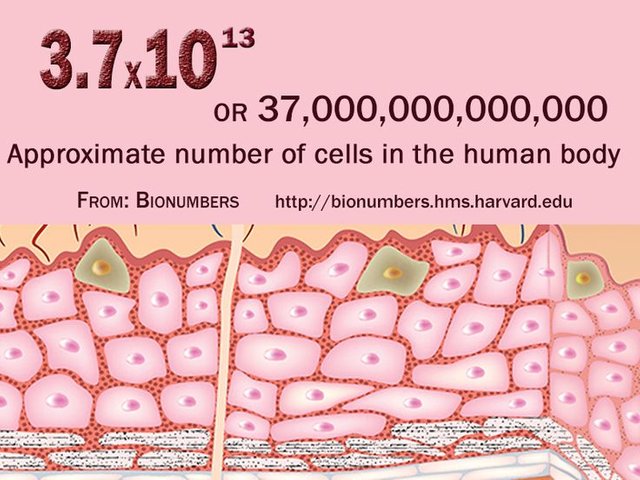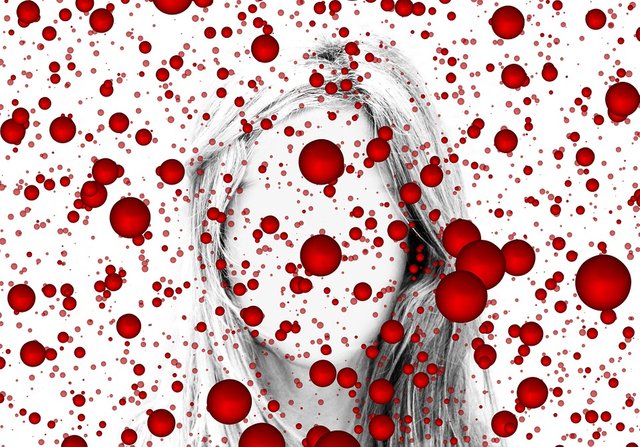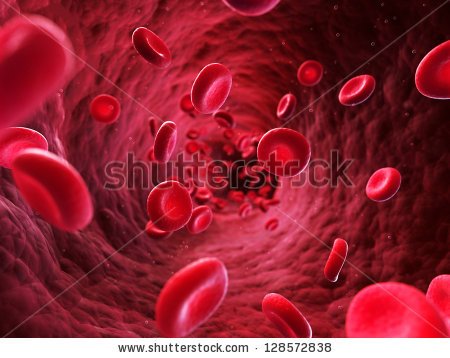Number of human body cells


Number of human body cells
The human body
The human body contains a large number of cells with different characteristics, functions and shapes. The cell is the basic unit for the construction of organs and organs of the human body, as well as a large number of biological processes such as construction and demolition, and also a large number of chemical reactions through which members The body to do its functions, and through this article will talk about the discovery of the cell and knowledge of its components and contents, as we will identify some of the cells in the human body and recall the functions and number.
Cell discovery
The cell is the basic unit in all living organisms, and is the unit of composition and function responsible for a large number of tasks in the human body. The cell was discovered after the invention of the optical microscope invented by the world Levinhook in 1591, where he studied the organs in the human body and how to install arteries and tissues . In 1665, the scientist Robert Hooke used a microscope developed by the scientist Levenhoek and studied plant cells. He first saw animal cells. Since then, the study of cells for all organisms has been ambitious for all scientists. R is very new and sophisticated methods to study these cells and knowledge of its components, functions and materials involved in the construction, with the invention of the electron microscope and invent some advanced pigments that glow different colors when placed on cells show that most of the living cells consist of the following:

Organic components such as carbohydrates, lipids, proteins and nucleic acids.
Inorganic compounds such as free ions, calcium compounds, phosphates, potassium salts, and sodium.
Water, which is the main component of all living cells, forms about 90% of the cell's structure.
Cell parts
Cells contain many organelles that perform different functions. These include the transfer of nutrients into and out of the cell and contribute to the process of cell division and growth. The most important contents of the cell are:
The nucleus of the cell: which preserves within it the genetic code of the organism, and is important in the process of cell division and the production of some materials necessary for the human body.
Cytoplasm: It forms the liquid part inside the cell and contains all the organelles and chemicals that the cell needs.
The endoplasmic network is responsible for giving the cell its distinctive form, as well as being an essential part of the cell division process.
The living organisms have many functions, most notably the production of energy in the cell.
Number of cells in the human body
The human body contains a large number of cells of different shapes and functions of many of the most important of these cells are:
Red blood cells, which range from 5-6 million cells per cubic centimeter, carry food and oxygen to all parts of the body and take waste from these parts.
White blood cells, which is the most important line of defense in the human body to protect it from diseases, bacteria and microbes, ranging in number from 5 to 10 thousand in millimeters of cubic meters.
Neurons: which carry a large number of important functions in the human body, such as the transfer of orders from the brain to all members of the body and receive signals from sensory devices in the human body as they number in the brain nearly 100 billion cells.

By Bayan Gharib
This post has received gratitude of 19.54 % from @appreciator thanks to: @arrihan.
This post has received a 38.16 % upvote from @boomerang thanks to: @arrihan
@boomerang distributes 100% of the SBD and up to 80% of the Curation Rewards to STEEM POWER Delegators. If you want to bid for votes or want to delegate SP please read the @boomerang whitepaper.
demasiado bueno e instructivo
This wonderful post has received a bellyrub 25.10 % upvote from @bellyrub. Please make sure to vote for my pops as a witness @zeartul,Here
This post has received a 10.98 % upvote from @aksdwi thanks to: @arrihan.
This post has received a 7.75 % upvote from @buildawhale thanks to: @arrihan. Send at least 1 SBD to @buildawhale with a post link in the memo field for a portion of the next vote.
To support our daily curation initiative, please vote on my owner, @themarkymark, as a Steem Witness
Good post
Congratulations @arrihan, this post is the second most rewarded post (based on pending payouts) in the last 12 hours written by a User account holder (accounts that hold between 0.1 and 1.0 Mega Vests). The total number of posts by User account holders during this period was 2286 and the total pending payments to posts in this category was $1991.28. To see the full list of highest paid posts across all accounts categories, click here.
If you do not wish to receive these messages in future, please reply stop to this comment.
@arrihan : please check your sources.
What do you mean by how to install arteries and tissues?; Do you mean this?
Antonie Philips van Leeuwenhoek ; 24 October 1632 – 26 August 1723) Source : Wikipedia
KICKASS https://steemit.com/science/@kickassfacts/25-kickass-and-amazing-facts-about-dreams !!!!